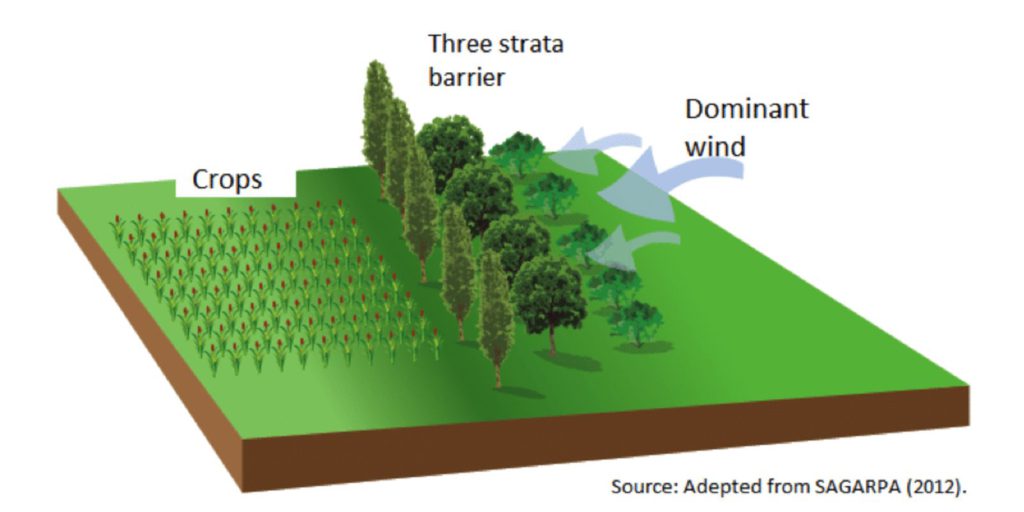Windbreaks have a huge number of benefits for all kind of farming and landscape rehabilitation activities. Strong winds are incredibly drying and literally suck moisture out of the soil, plants & trees, animals…and people!
A well designed windbreak slows the wind speed and guarantees faster and better growth of crops, orchards & livestock.
The main design considerations for windbreaks are:
Height
A windbreak protects a distance from 2 to 10 times it’s height. So a 5 metre high windbreak would protect a distance up to 50 metres away (to a lesser extent the further away you got)
Plant & tree species selection plays a role, and the best windbreaks are multi-layered comprising various plants & trees to block wind at multiple heights.
Density
The density of a windbreak determines how effective it is at reducing the speed of the wind. Density can be managed by choice of species, such as conifers or decidous, the spacing of the trees and the number of rows in the windbreak.
Orientation
To achieve maximum effectiveness, windbreaks should be oriented as close to perpendicular (90 degrees) to the prevailing winds as possible. So in the Western Cape, where the summer prevailing wind is South Easter, and the Winter prevailing wind is North Wester, then a windbreak is best planted on a South West to North East line. To allow for changes in wind direction windbreaks are often planted in multiple directions such as L U or E shapes
Continuity
Any gaps in a windbreak will act like windtunnels and concentrate the force of the wind through a small area. If access roads, or utility lines need to be accounted for in, they should be angled at 90 degrees to the prevailing wind to avoid the road acting as a tunnel for the wind
Length
The length of a windbreak determines the total area receiving protection. For best protection the length of a windbreak should exceed the height by at least 10 to 1.
Species selection
It is recommended to always use as many species as possible in the windbreak to avoid risk from loss from disease or insects. Having a varied selection of plants can also provide food and habitat for wild animals and birds throughout the year.
Climate, soil and availability of trees from local nurseries are the main factors which need to be considered. Establish what species grow well in your area as well as their expected height, spread and density.
Some common species used in windbreaks in South Africa
Beefwood, eucalyptus & pine trees are historically very popular in South Africa and grow to be excellent windbreaks (eucalyptus requires coppicing when young to spread sufficiently). However all are considered invasive throughout South Africa, spread their seeds over great distances and compete with indiginous plants for water & fertile soil.
The Leyland Cypress tree (Cupresses Leylandii) has become increasingly popular in South Africa as whilst they are not indigenous, they do not produce fertile seeds and don’t have invasive potential. They grow faster than almost any other tree once established, and if planted close together form dense impentrible hedges which provide habitat for wildlife, “living fences” for livestock and very effective windbreaks.
Yellowwood trees, primarily the Outeniqua Yellowwood (Afrocarpus falcatus) grow into giants of up to 45 metres in height but when exposed or in coastal conditions they rarely exceed 25 metres. Their growth is slow compared to conifer species, but as a hardwood, they produce valuable timber and are very hardy in a range of soil types.
Wild plum (Harpephyllum caffrum) and wild peach (Kiggelaria africana) grow to 15 metres in height and produce food for birds and wild animals and are suited to coastal conditions
False Olive (Buddleja salinga) and Camphor Bush (Tarconanthas Camphoratus) are fast growing pioneers which are very bushy, suitable to coastal conditions and grow to around 10m in height
Other good indiginous species for mixed windbreaks
Keurboom (Virgilia spp)
Milkwood (Sideroxylon inerme)
Wild Olive (Olea africana)
Waterberry (Syzigium cordatum)
Karee (Rhus / Searsia lancea)
Salt and pepper tree (Myoporum laetum)
Coast silver oak (Brachylaena discolor)
Henkel’s yellowwood (Podocarpus henkelii)
Natal plum (Carissa macrocarpa)
Hiccup nut (Combretum bracteosum)
Aloes (bush and tree varieties)
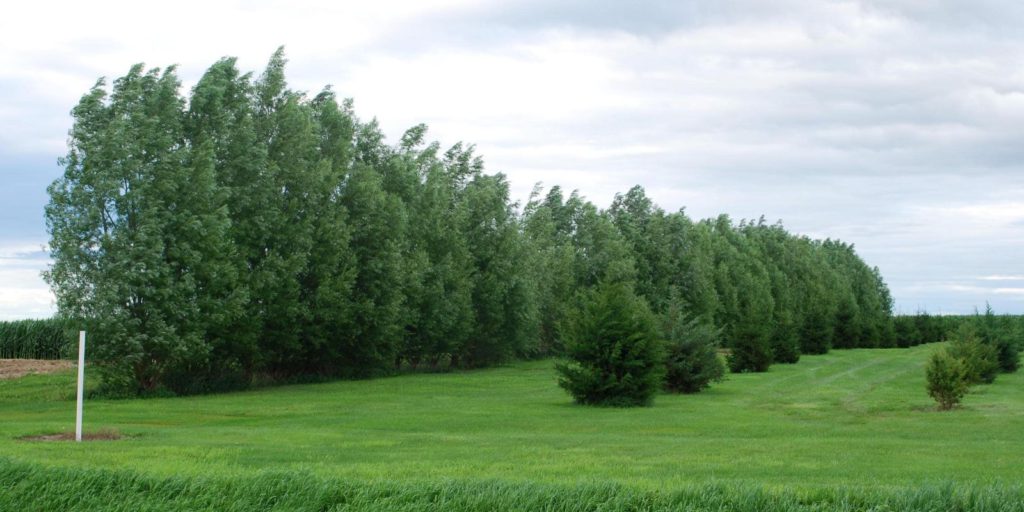
Staggered trees at increasing heights
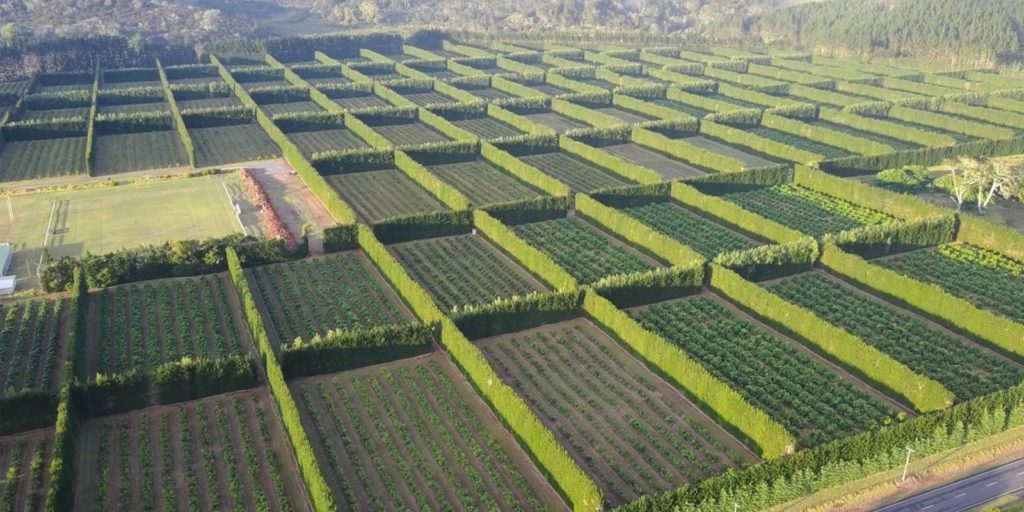
Crop Protection
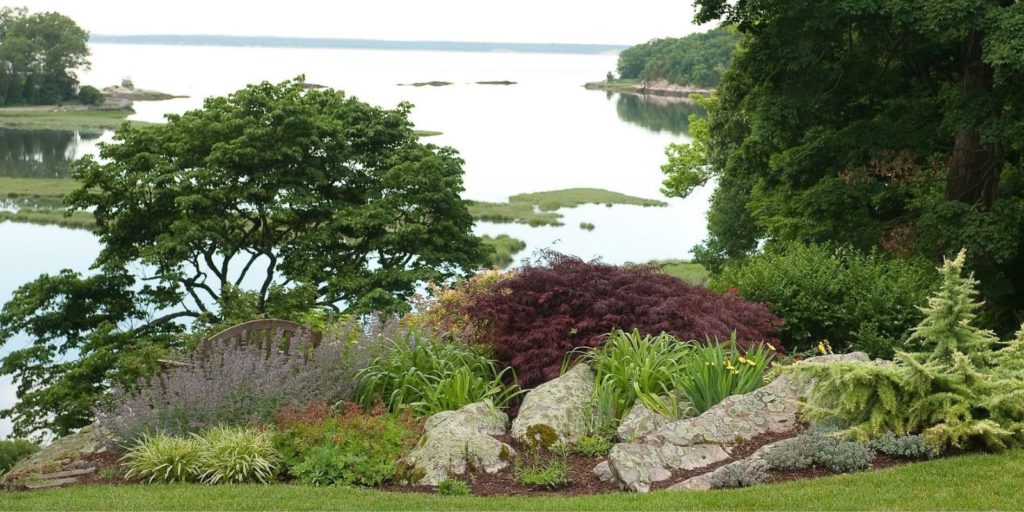
Coastal Garden Design
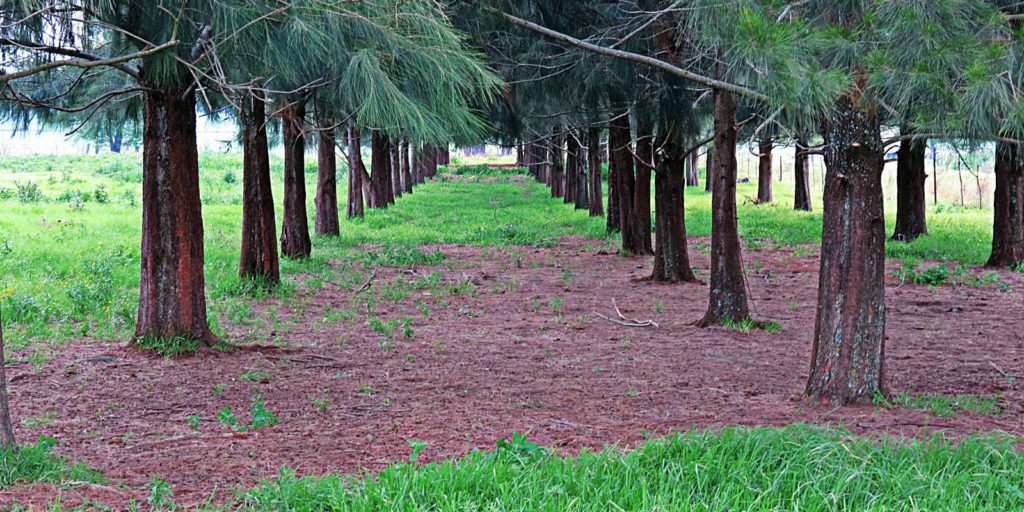
Windbreaks between Fields
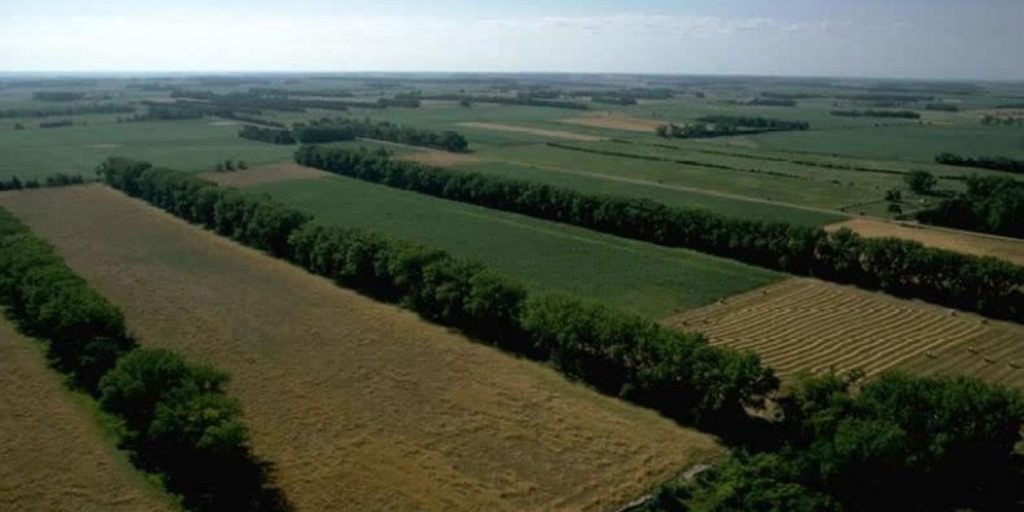
Windbreaks In Fields
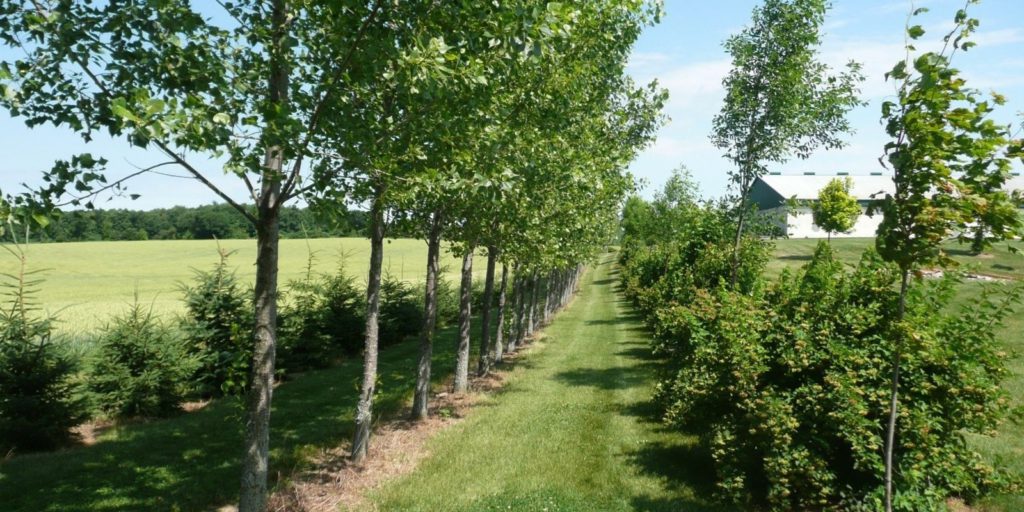
Newly Established Windbreak

